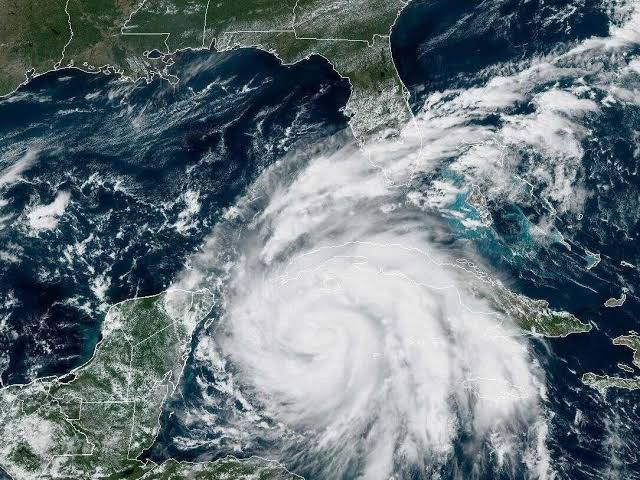
The National Hurricane Center declared on 27th September, that Hurricane Ian is anticipated to produce a hazardous storm surge and whiffs as high as 140 mph when it moves toward Florida’s Gulf Coast by the end of September.
At 5 a.m. ET on Tuesday, Ian had intensified into a major Category 3 storm and was approaching western Cuba with maximum sustained winds of 125 mph, according to forecasters. Multiple houses were lifted up by administrations in the Pinar del Rio region of Cuba, and protection was carried out to safeguard crops in Cuba’s primary tobacco-growing area. The west coast of the island could experience a storm surge of up to 14 feet (4.3 meters), according to the U.S. National Hurricane Center.
Florida’s west coast to get more than Cuba
The National Hurricane Center (NHC) issued a hurricane warning for Florida’s west coast, extending from Bonita Beach north to Tampa Bay to the Anclote River, stating that there was a 100% risk of destructive winds and water.
“Please treat this storm seriously. It’s the real deal. This is not a drill”. At a news conference on storm preparations in Tampa on Monday, Hillsborough county emergency management director Timothy Dudley declared, “This is not a drill”.
Although the western part of the island is only sparsely populated, the capital of Cuba was also affected by tropical storm force gusts that extended 115 miles from Ian’s center. Residents of Havana were openly concerned about flooding before the storm; workers were clearing out storm drains, and fishermen were pulling their boats out of the water.
For a large portion of Florida’s west coast, from Suwanee in the Big Bend region to the tip of the peninsula in the Everglades, a storm-surge warning, meaning the surge might endanger life, is in force.
As well as the St. Johns River further inland, a warning is in place for the extreme northeastern Florida coast from close to the Georgia state line down to Marineland.
Which places are being hit by Florida?
According to the hurricane center, Florida’s west coast would likely experience storm surges of 8 to 12 feet from just south of Bradenton to Bonita Beach, which is south of Fort Myers.
According to the hurricane center, Tampa Bay could experience a storm surge of 5 to 8 feet. Other northern and southern regions are also at risk for significant storm surges.
Florida’s upstate government warns citizens
The 2022 Atlantic hurricane season got off to an unusually slow start, but recently, a flurry of tropical activity has altered the trajectory of the season, and Hurricane Ian is no exception.
On Saturday afternoon, Florida Governor Ron DeSantis issued a pre-landfall state of emergency for the whole state and advised residents to be ready for Ian’s effects due to the impending threat Ian poses to the United States. DeSantis also said on Sunday that he has called out the National Guard to assist with the storm’s landfall and utility crews to help restore power after it.
Parts of counties in the hurricane warning zone, which extends from the area of Fort Myers to the north of Tampa, have been ordered to evacuate. This encompassed parts of Lee County, which includes Fort Myers, as well as Pinellas, Hillsborough, and Manatee counties in the Tampa area, Hernando, Sarasota, and Charlotte counties. Centers for the homeless are now available for use.
Hurricanes are becoming more intense than ever due to climate change.
Officials in the area issued a warning on Tuesday that anyone who calls for assistance after remaining in evacuation zones might not receive it right away.